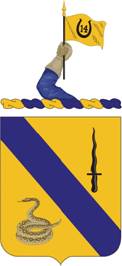
The 14th Cavalry Regiment is a cavalry regiment of the United States Army. It has two squadrons that provide reconnaissance, surveillance, and target acquisition for Stryker brigade combat teams. Constituted in 1901, it has served in conflicts from the Philippine–American War to the Operation Iraqi Freedom and Operation Enduring Freedom in Afghanistan.
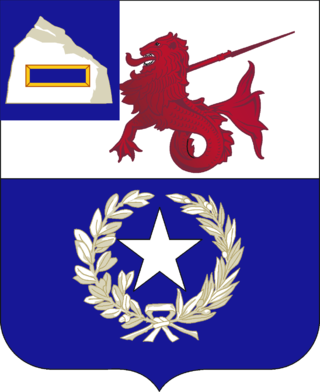
The 57th Infantry Regiment was a unit in the Philippine Scouts. During their combat in Bataan members received 1 Medal of Honor, 21 Distinguished Service Crosses and 68 Silver Stars.
The 46th Infantry Regiment is a unit in the United States Army that served in World War II and Vietnam. The 1st Battalion, 46th Infantry Regiment currently conducts Infantry One Station Unit Training under the 197th Infantry Brigade.

The 61st Infantry Regiment is an infantry regiment of the United States Army traditionally associated with the 5th Infantry Division.
The 141st Infantry Regiment is an infantry regiment in the United States Army. The lineage of the 141st includes units tracing origins to the Texas Revolution, such as Company A, First Texas, 1836, and other infantry companies of the First Texas formed in the 1870s and 1880s.
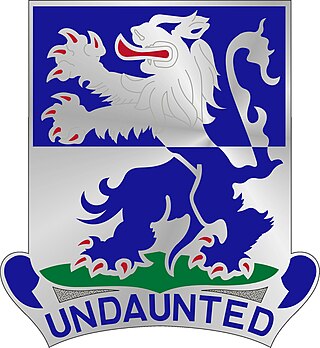
The 119th Infantry Regiment was an infantry regiment of the United States Army. The unit was an organic element of the 30th Infantry Division of the United States Army.

The 6th Field Artillery Regiment is a Field Artillery Branch regiment of the United States Army first activated in 1907 from numbered companies of artillery. It was first organized with two battalions.
The 16th Field Artillery Regiment is a field artillery regiment of the United States Army. The regiment served with the 4th Division in World War II and with the 4th and 8th Divisions between the World Wars. As the 16th Armored Field Artillery Battalion, it served with the 9th Armored Division during World War II, and with the 2nd Armored Division after the war. Designated a parent regiment under the Combat Arms Regimental system, and later the U.S. Army Regimental System, since 1957, regimental elements have served with the 1st, 2nd and 4th Armored Divisions; the 4th, 8th, and 81st Infantry Divisions; and the 1st Cavalry Division. Regimental elements have participated in combat in Vietnam, and in Operation Iraqi Freedom. The regiment currently has a single active battalion, the 3rd Battalion, 16th Field Artillery, assigned to the 2nd Brigade Combat Team, 1st Cavalry Division and stationed at Fort Cavazos, Texas.
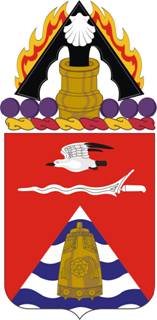
The 31st Field Artillery Regiment is a field artillery regiment of the United States Army, first Constituted in 1918 in the National Army (USA). The 1st Battalion, 31st Field Artillery, was constituted 5 July 1918 in the National Army as the 31st Field Artillery and assigned to the 11th Division. The "Proud American" Battalion was organized at Camp George G. Meade, Maryland 6 August 1918 but relieved thereafter from its assignment to the 11th Division on 30 September 1918. The unit demobilized 9 December 1918 at Camp George G. Meade, Maryland. On 22 July 1929, 31st FA was reconstituted in the Regular Army and assigned to the 2nd Division but was, once again, later relieved on 1 January 1930 from its assignment to the 2nd Division. The "Proud American" Battalion was subsequently assigned to the 7th Division on 1 July 1940 and activated at Camp Ord, California where it was reorganized and re-designated as the 31st Field Artillery Battalion on 1 October 1940. It underwent another reorganization and re-designation on 1 July 1957 as the 31st Field Artillery, "Always First," which was a parent regiment under the Combat Arms Regimental System. 31st FA was then withdrawn from the Combat Arms Regimental System 16 March 1989, reorganized under the United States Army Regimental System, and transferred to the United States Army Training and Doctrine Command (TRADOC). The unit was re-designated as the 31st Field Artillery Regiment on 1 October 2005 and began the reactivation process on 1 October 2010, attaining operational capacity under the 434th Field Artillery Brigade and activated on 11 January 2011. The "Proud American" Battalion is credited with participating in multiple campaigns in World War II and the Korean War. It has been distinguished with several decorations, to include the Philippine Presidential Unit Citation and the Republic of Korea Presidential Unit Citation that was awarded on three separate occasions.
The 1st Battalion, 79th Field Artillery is the only active duty element remaining of the 79th Field Artillery. First constituted on 1 July 1916 in the Regular Army as Troops A (Alpha) and B (Bravo) in the 21st Cavalry, their mission has changed greatly from their Cavalry days. The 1st Battalion, 79th Field Artillery is part of the 434th Field Artillery Brigade charged with the TRADOC mission of Basic Combat Training or BCT of new soldiers to the United States Army.

The 86th Field Artillery Regiment is a inactive parent field artillery regiment of the United States Army, last represented in the Vermont Army National Guard by the 1st Battalion, 86th Field Artillery Regiment. Perpetuating the Vermont Light Artillery Batteries of the American Civil War and subsequent Vermont artillery units, the regiment was organized following World War II as the 206th Field Artillery Battalion in the Vermont National Guard. The 206th saw active service in Germany with the 43rd Infantry Division during the Korean War, and became the 124th Artillery, a Combat Arms Regimental System parent regiment, in 1959. Represented by the 1st Howitzer Battalion, 124th Artillery, the regiment was renumbered as the 86th Artillery in 1964 when the 1st Battalion became the brigade artillery battalion of the 86th Armored Brigade. The 1st Battalion served in that role with the brigade for much of the rest of its existence.
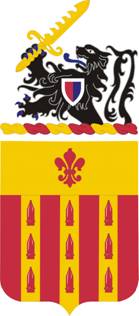
The 333rd Field Artillery Regiment is a regiment of the Field Artillery Branch of the United States Army.

The 51st Infantry Regiment is a regiment of the United States Army first established in 1917.

The 98th Cavalry Regiment is a parent regiment of the United States Army established in 2006. It is represented in the Mississippi Army National Guard by the 1st Squadron, 98th Cavalry, an element of the 155th Armored Brigade Combat Team.

The 146th Field Artillery Regiment is a field artillery regiment of the Army National Guard first Constituted in 1886 as the 1st, and 2nd Regiments of Infantry.

The 37th Infantry Regiment is an inactive infantry regiment in the United States Army.

The 197th Field Artillery Regiment is a regiment in the New Hampshire Army National Guard.
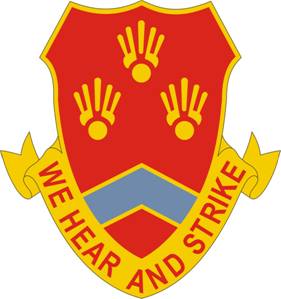
The 214th Field Artillery is a regiment in the Georgia National Guard.

The 135th Infantry Regiment is an infantry regiment in the Minnesota Army National Guard.
The 351st Infantry Regiment was a National Army Infantry Regiment first organized for service in World War I as part of the 88th Infantry Division in Europe. It later served in the Mediterranean Theater during World War II. Since then it has served as a training Regiment, training Army Reserve and Army National Guard Soldiers for service overseas after the September 11 terrorist attacks.
















